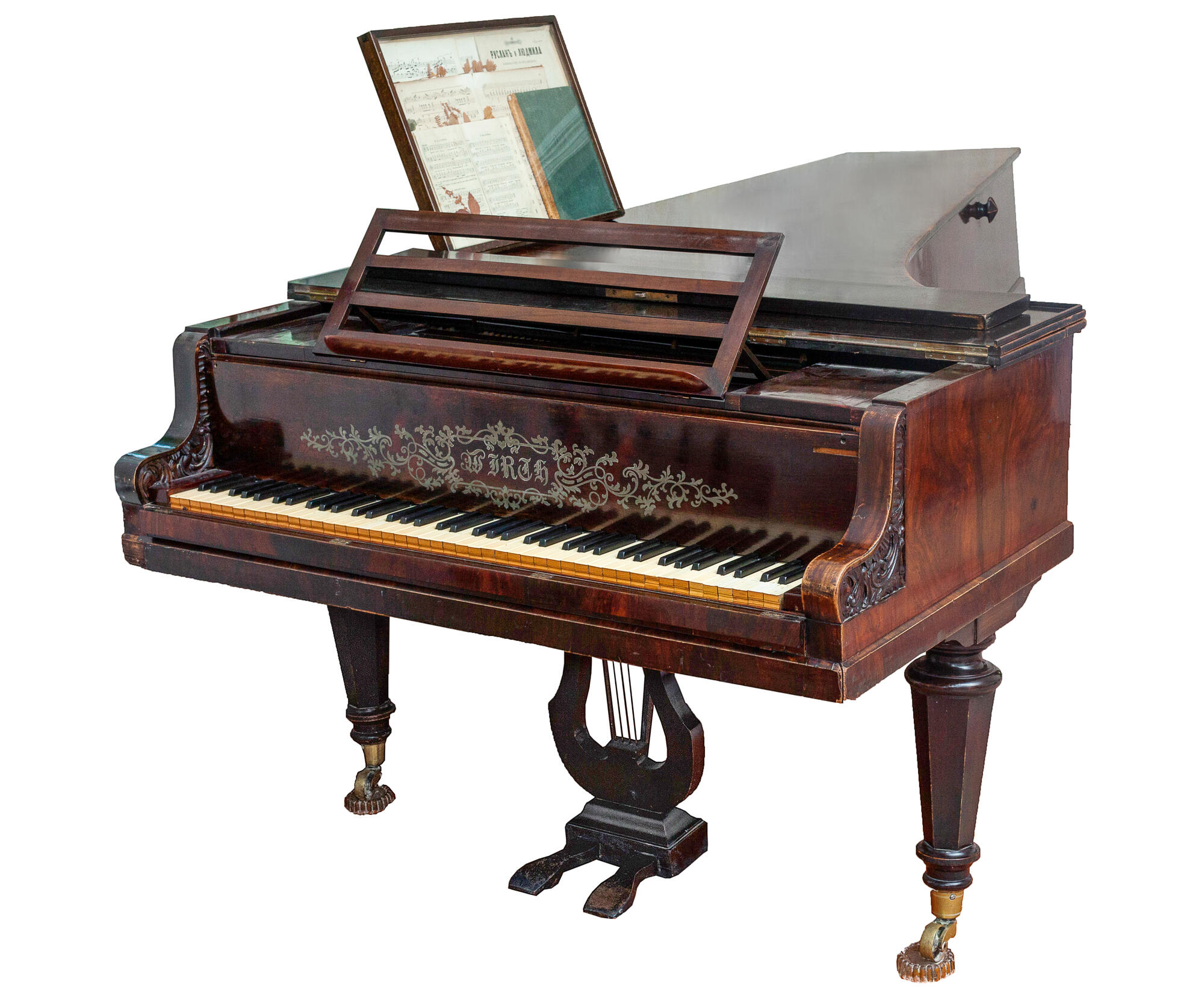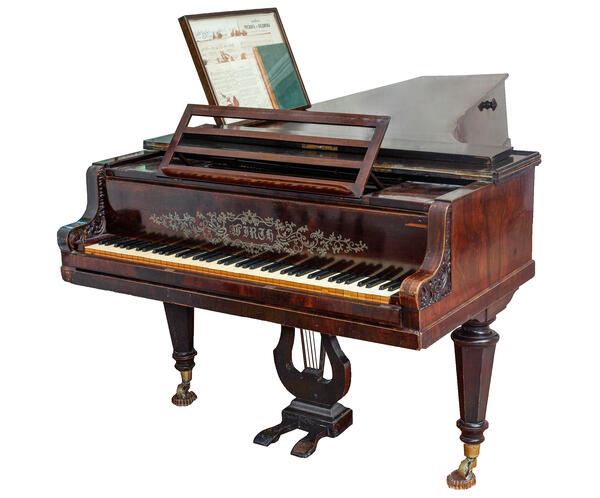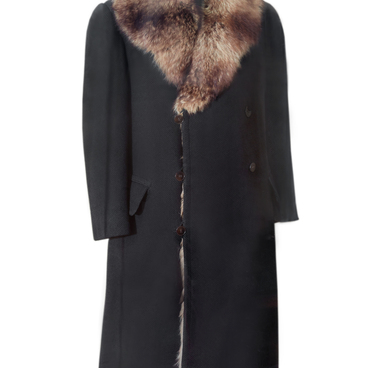There is a Wirth grand piano in the living room of the House-Museum. During the creation of the memorial exhibition in 1929, Anna Ulyanova-Elizarova personally selected from the warehouses of the Kremlin this instrument, which was similar to the grand piano that belonged to the Ulyanovs.
The instrument was in a bad condition: the lid was shattered, the hinges were missing, the hammers in the musical part were broken, and the strings were torn. Before the opening of the memorial exhibition, specialists repaired the mechanism and case.
The piano’s case and its main support unit, the rim, are located horizontally. The rim stands on three massive legs with bronze frames. Two of the legs are on the case’s front sides and the third is at the tail end. The keyboard consists of 34 black keys and 48 white keys and is protected by a special profile cover — a flap that can be closed with a key. On the inside of the cover is a company name. Under the middle part of the keyboard is a column in the form of a lyre, not reaching down to the floor, with pedals mounted on the column. The piano was made by the Karl Wirth Factory around 1844.
In 1887, Alexander Ulyanov was tried for the attempted assassination of Emperor Alexander III and later executed. Anna Ulyanova, who was finishing her Bestuzhev courses in St. Petersburg and had participated in a political demonstration in 1886, was also arrested. Anna received five years of exile, which she served in the village of Kokushkino, then in Kazan and Samara. At this time, Vladimir Ulyanov was expelled from Kazan University for his participation in student riots and placed under police supervision.
Simbirsk society boycotted the terrorist’s unreliable family, and the Ulyanovs had to move. Maria Alexandrovna placed an ad in a newspaper about the sale of the house, furniture, and grand piano.
The Ulyanovs did not manage to sale the grand piano in Simbirsk. Anna Ulyanova-Elizarova recollected:
The instrument was in a bad condition: the lid was shattered, the hinges were missing, the hammers in the musical part were broken, and the strings were torn. Before the opening of the memorial exhibition, specialists repaired the mechanism and case.
The piano’s case and its main support unit, the rim, are located horizontally. The rim stands on three massive legs with bronze frames. Two of the legs are on the case’s front sides and the third is at the tail end. The keyboard consists of 34 black keys and 48 white keys and is protected by a special profile cover — a flap that can be closed with a key. On the inside of the cover is a company name. Under the middle part of the keyboard is a column in the form of a lyre, not reaching down to the floor, with pedals mounted on the column. The piano was made by the Karl Wirth Factory around 1844.
In 1887, Alexander Ulyanov was tried for the attempted assassination of Emperor Alexander III and later executed. Anna Ulyanova, who was finishing her Bestuzhev courses in St. Petersburg and had participated in a political demonstration in 1886, was also arrested. Anna received five years of exile, which she served in the village of Kokushkino, then in Kazan and Samara. At this time, Vladimir Ulyanov was expelled from Kazan University for his participation in student riots and placed under police supervision.
Simbirsk society boycotted the terrorist’s unreliable family, and the Ulyanovs had to move. Maria Alexandrovna placed an ad in a newspaper about the sale of the house, furniture, and grand piano.
The Ulyanovs did not manage to sale the grand piano in Simbirsk. Anna Ulyanova-Elizarova recollected:


